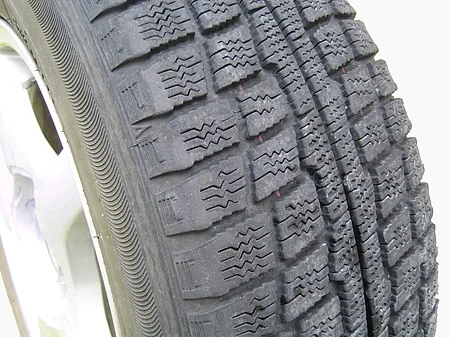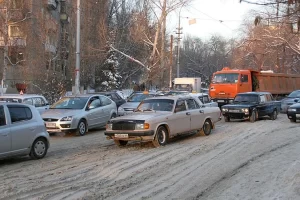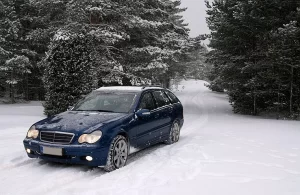Snow Tires – Everything You Need To Know


Snow tires, also known as winter tires, are tires designed for use on snow and ice. Snow tires have a tread design with larger gaps than those on conventional tires, increasing traction on snow and ice. Such tires that have passed a specific winter traction performance test are entitled to display a 3PMSF (Three-Peak Mountain Snow Flake) symbol on their sidewalls. Tires designed for winter conditions are optimized to drive at temperatures below 7 °C (45 °F). Some snow tires have metal or ceramic studs that protrude from the tire to increase traction on hard-packed snow or ice. Studs abrade dry pavement, causing dust and creating wear in the wheel path Regulations that require the use of snow tires or permit the use of studs vary by country in Asia and Europe, and by state or province in North America.
All-season tires have tread gaps that are smaller than snow tires and larger than conventional tires. They are quieter than winter tires on clear roads, but less capable on snow or ice.
Roadway conditions in winter
Snow tires operate on a variety of surfaces, including pavement (wet or dry), mud, ice, or snow. The tread design of snow tires is adapted primarily to allow penetration of the snow into the tread, where it compacts and provides resistance against slippage.[4] The snow strength developed by compaction depends on the properties of the snow, which depend on its temperature and water content—wetter, warmer snow compacts better than dry, colder snow up to a point where the snow is so wet that it lubricates the tire-road interface. New and powder snow have densities of 0.1 to 0.3 g/cm3 (6 to 20 lb/cu ft). Compacted snow may have densities of 0.45 to 0.75 g/cm3 (28 to 47 lb/cu ft).
Snow or ice-covered roadways present lower braking and cornering friction, compared to dry conditions. The roadway friction properties of snow, in particular, are a function of temperature. At temperatures below −7 °C (20 °F), snow crystals are harder and generate more friction as a tire passes over them than at warmer conditions with snow or ice on the road surface. However, as temperatures rise above −2 °C (28 °F), the presence of free water increasingly lubricates the snow or ice and diminishes tire friction. Hydrophilic rubber compounds help create friction in the presence of water or ice.
Attributes that can distinguish snow tires from “all-season” and summer tires include:
- An open, deep tread, with a high void ratio between rubber and spaces between the solid rubber
- Shoulder blocks, a specialized tread design at the outside of the tire tread to increase snow contact and friction
- A narrower aspect ratio between the diameter of the tire and the tread width to minimize resistance from the plowing effect of the tire through deeper snow
- Hydrophilic rubber compounds that improve friction on wet surfaces
- Additional siping, or thin slits in the rubber, that provide more biting edges and improve traction on wet or icy surfaces.
Wet-film conditions on hard-compacted snow or ice require studs or chains.
Dry and moist snow conditions on roadways


Tire/snow interactions
The compacted snow develops strength against slippage along a shear plane parallel to the contact area of the tire on the ground. At the same time, the bottom of the tire treads compress the snow on which they are bearing, also creating friction. The process of compacting snow within the treads requires it to be expelled in time for the tread to compact snow anew on the next rotation. The compaction/contact process works both in the direction of travel for propulsion and braking, but also laterally for cornering.
The deeper the snow that the tire rolls through, the higher the resistance encountered by the tire, as it compacts the snow it encounters and plows some of it to either side. At some point on a given angle of uphill pitch, this resistance becomes greater than the resistance to slippage achieved by the tread’s contact with the snow and the tires with power begin to slip and spin. Deeper snow means that climbing a hill without spinning the powered wheels becomes more difficult. However, the plowing/compaction effect aids in braking to the extent that it creates rolling resistance.
Source: Wikipedia
Schedule Your Consultation Today
Fields marked with an * are required
"*" indicates required fields


